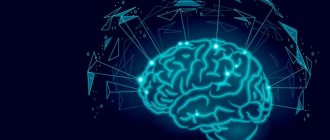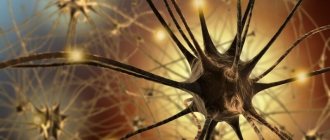Every person has the ability to hypnotize themselves. We rarely think about it, but in everyday life, many people use self-hypnosis very often. Experts have come to the conclusion that there is no suggestion from the outside. There is only self-hypnosis, which underlies both self-hypnosis and hypnosis.
Autogenic training is closely related to conscious self-hypnosis. For the first time, the famous German psychiatrist Johann Schultz spoke about autogenic training. This happened in 1932.
Recently, autogenic training according to Schultz, which over time became a classic, has again begun to arouse interest among many people. What is autogenic training according to Schultz and what is its meaning? Today we will look at these and many other questions regarding autogenic training, invented by Johann Schulz.
Rationale
Autogenic training (AT) is one of the most widely used methods of psychotherapy for patients with chronic somatic diseases (CSD). This is due to the high efficiency of the method in the framework of complex therapy, rehabilitation, sanatorium treatment and its cost-effectiveness [1]. A number of studies have shown an improvement in the psychological status of patients against the background of AT [2–4]. However, to date, the mechanisms of therapeutic action and predictors of the effectiveness of the method have not been sufficiently studied, which is necessary for the development of differentiated indications for its use.
The purpose of the study is to study the effectiveness of AT and identify factors that make it possible to predict it in the correction of the psychological state of patients with chronic disease.
Autogenic training according to Schultz: what is it?
Autogenic training according to Schultz is a special psychotherapeutic technique, the main task of which is to restore the psychological and physiological health of the patient. Autogenic training is a relaxation technique and consists of a series of exercises. A person practicing autogenic training feels pleasant warmth throughout the body, heaviness in the torso and limbs, and his consciousness relaxes and becomes clearer.
Johann Schultz studied people who were in a trance state for a long time. He based his observations on the method he created. The psychiatrist studied not only people in a state of trance, but also paid a lot of attention to yogic practices and the works of Coue, Vogt, and Jacobson. Schultz argued that restoring health on a physiological and psychological level is possible only through muscle relaxation, developed imagination, self-hypnosis, feelings of drowsiness and psychological peace.
Autogenic training according to Schultz normalizes the heartbeat and breathing rhythm, relieves muscle tension, insomnia and migraines, reduces the level of “bad” cholesterol in the blood, and increases blood flow to the brain and limbs. This training is indicated for people suffering from bronchial asthma, hemorrhoids, stomach ulcers, rheumatic back pain, tuberculosis, indigestion, diabetes, and constipation.
If we talk about psychological effects, autogenic training according to Schultz helps reduce fatigue and depression, and reduce anxiety. Many athletes who practice this technique have improved their performance, and expectant mothers experienced less pain and anxiety during childbirth.
Material and methods
Objects (participants) of the study
The study included 325 patients with chronic disease aged from 25 to 64 years (average age 40.6±1.2 years), including 82 with irritable bowel syndrome with constipation, 82 with hypertension, 81 with spinal osteochondrosis with pain syndrome, chronic nonspecific salpingoophoritis 80.
Analysis in groups
Using the randomization method (as all patients were included in the study, they were sequentially assigned a number; every even numbered patient was included in the main group, and every odd patient was included in the control group), the patients were divided into two groups: the main group and the control group.
Before the start of psychotherapy, the main and control groups were comparable in age, gender, prescribed physiotherapy complexes, drug treatment (prescription of psychotropic drugs was excluded), as well as indicators of psychological status.
Patients of the main group ( n
=163) were prescribed psychotherapy using AT; the control group (
n
=162) did not undergo psychotherapy.
To study predictors of AT effectiveness in the main group, two subgroups were identified. Subgroup A included 128 patients whose condition returned to normal during the observation period, subgroup B included 35 patients whose condition improved by the end of observation. A comparative analysis of the background indicators of the selected subgroups was carried out.
Study design
An open, single-center, observational study was conducted.
Eligibility Criteria
Inclusion criteria:
– patient age from 25 to 64 years;
– presence of chronic disease.
Exclusion criteria:
– mental illnesses (codes F01–F99 according to the International Classification of Diseases, 10th revision);
– taking psychotropic drugs.
Conditions
The study was conducted in a hospital setting at the National Medical Research Center for Rehabilitation and Balneology of the Russian Ministry of Health (Moscow).
Duration of the study
The duration of the study was 3 years (from 2014 to 2016), the observation period for each patient was 3 weeks.
Description of medical intervention
AT was carried out according to our modified method [5], which includes the following main elements:
1) verbal formulas of suggestion (suggestion) to achieve a feeling of relaxation, warmth and lightness in the face, neck, arms, back, abdomen, legs, whole body, as well as a feeling of peace;
2) visualization - patients were asked to remember not the formulas of suggestion, but the pleasant sensations that arise in a state of relaxation and peace, and associate these sensations with a visual symbol (“relaxation figure”).
During independent training, it was recommended to reproduce the state of relaxation by looking at the “relaxation figure” or imagining it. Classes were conducted in small groups (3–5 patients) 4 times a week (total course 12 lessons).
Main outcome of the study
The level of psychological adaptation, anxiety and depression was assessed according to survey data at the beginning and end of observation.
Methods for recording outcomes
Psychological examination was carried out at the beginning and end (after 3 weeks) of the course of treatment using the Abbreviated Multifactorial Personality Inventory (AMPI) [6], the Spielberger Anxiety and Anxiety Inventory (SATS) [7], and the Beck Depression Inventory (BDS) [8]. .
Ethical review
The study was approved by the local ethics committee of the Federal State Budgetary Institution “National Medical Research Center for Rehabilitation and Balneology” of the Russian Ministry of Health (protocol No. 2 of 06/01/16).
Statistical analysis
Principles for calculating sample size
: The sample size was not previously calculated.
Methods of statistical data analysis:
Statistical data processing was carried out using the Statistica v software package. 10.0 (StatSoft, USA). When analyzing the material, methods of mathematical statistics were used: Spearman's correlation coefficient, Wilcoxon test for paired measurements. The description of the results presents mean values and standard deviations.
Autogenic training according to Schultz: a set of exercises
Autogenic training, developed by Johann Schulz, consists of an initial course and an advanced course. The initial course includes six standard exercises, and the advanced course includes 7 meditative exercises. Today we will look at 6 basic exercises that are included in the initial course of autogenic training.
The training should be done daily, 2-3 times a day, 20-40 minutes after meals. The place for training should be quiet, moderately cool and comfortable.
Exercise No. 1. Relaxing the body
The main objective of this exercise is to enable a person practicing autogenic training to learn to relax his body. You need to take a comfortable position (lying down or sitting down). Each statement should be repeated three times. First you need to master the first statement perfectly, and only after that you can move on to the second statement. After mastering the second statement, move on to mastering the third statement, etc.
1) “I am in a calm state. My right arm is getting heavy.” Repeat for 3-4 days.
2) “I am in a calm state. My right arm becomes heavy. I am in a calm state. My left arm becomes heavy. My arms are getting heavy." Repeat for 2-3 days.
3) “I am in a calm state. My right arm becomes heavy. I am in a calm state. My left arm becomes heavy. I am in a calm state. My left leg becomes heavy. I am in a calm state. My right leg is getting heavy.” Repeat for 2-3 days.
4) “I am in a calm state. My left leg becomes heavy. My right leg is getting heavy.” Repeat for 2-3 days.
5) “I am in a calm state. My left leg becomes heavy. My right leg becomes heavy. My legs are getting heavy." Repeat for 3-5 days.
6) “I am in a calm state. My right leg becomes heavy. I am in a calm state. My left leg becomes heavy. My legs are getting heavy. I am in a calm state. My right arm becomes heavy. I am in a calm state. My left arm becomes heavy. My arms are getting heavy. My body is getting heavy." Repeat for 4-5 days.
Exercise No. 2. Increasing the degree of body relaxation
The main purpose of the second standard exercise is to expand the degree of relaxation of the body and expand, by increasing the temperature, the peripheral blood vessels. These results can be achieved using self-hypnosis. You must truly believe that your body is warming up.
1) “I am in a calm state. My arms and legs are becoming heavy." Repeat for 8-10 days. Repetition duration is 60-65 seconds. After 8-10 days, the duration should be increased to 80-95 seconds and the exercise repeated for another 2-4 days.
2) “I am in a calm state. My arms and legs become heavy. My feet become warm. My right hand is getting warm." Repeat for 5-7 days. Repetition duration is 180-200 seconds.
3) “I am in a calm state. My arms and legs become heavy. My feet become warm. My right hand becomes warm. My left hand is getting warm." Repeat for 3-5 days. Repetition duration is 180-200 seconds.
4) “I am in a calm state. My arms and legs become very heavy. My feet become warm. My hands are getting warm." Repeat for 3-5 days. Repetition duration is 180-200 seconds.
5) “I am in a calm state. My arms and legs become heavy. My hands and feet become warm. My body becomes heavy and warm." Repeat for 4-6 days. Repetition duration is 180-200 seconds.
Exercise No. 3. Aligning the heart rhythm
The third exercise was developed by Johann Schultz to equalize the heart rhythm and improve the functioning of the cardiovascular system. A person practicing autogenic training should lie down and place his right hand on his heart.
For 10-14 days you need to say the following phrase: “I am in a calm state. My arms and legs become heavy. My hands and feet become warm. My heart begins to beat rhythmically and calmly.” Repetition duration is 100-120 seconds.
Exercise No. 4. Calming your breathing
The breathing process is the main object of the fourth exercise in the initial course of autogenic training according to Schultz. During the first three exercises, breathing also becomes harmonious and calm, but only the fourth exercise affects the breathing rhythm directly and not indirectly.
You need to lie down. For 15-18 days, repeat the following phrase: “I am in a calm state. My arms and legs become heavy and warm. My heart begins to beat rhythmically and calmly. I begin to breathe evenly and deeply.” Repetition duration is 120-140 seconds.
Exercise No. 5. Calms the central nervous system
The results of many psychotherapeutic and physiological studies indicate that the central nervous system can be calmed by warming the abdominal cavity. The fifth basic exercise was created by Schultz precisely for this purpose.
You need to take a comfortable position and start repeating the following phrase: “I am in a calm state. My arms and legs become heavy and warm. My heart begins to beat rhythmically and calmly. I begin to breathe evenly and deeply. My solar plexus begins to radiate warmth.” This statement should be repeated for 20-24 days. Repetition duration is 180-200 seconds.
Exercise No. 6. Cooling the forehead
Our ancestors also knew very well that a cool forehead would help calm the nervous system and relax the body. The cold forehead is the main object of the sixth basic exercise of autogenic training according to Schultz.
You should repeat the following statement for 15-18 days: “I am in a calm state. My arms and legs become heavy and warm. My heart begins to beat rhythmically and calmly. I begin to breathe evenly and deeply. My solar plexus begins to radiate warmth. My forehead becomes cool." Repetition duration is 120-140 seconds.
We recommend: Auto-training to calm the nervous system
Our channel: Yandex Zen
results
Main results of the study
According to the data obtained (see table),
Dynamics of psychological test scores for 1 month in patients of the main and control groups (DM±m) Note. * — p<0.05; ** — p<0.01; *** — p<0.001. in the main group by the end of the observation there was a significantly more pronounced decrease in indicators on scales 1, 2 and 7 and an increase in values on the 9th scale of the SMOL test, which indicates a decrease in the level of anxiety, tension, fixation of attention on one’s own sensations, increased activity and mood against the background of AT.
In the main group, a significantly more pronounced ( p
<0.001) compared to the control, a decrease in the level of reactive and personal anxiety according to the ShTT and a decrease in indicators according to the BDS.
The study of the mechanisms of action of AT revealed the following correlations: changes in indicators on the ShTT and the 2nd SMOT scale correlated with the dynamics of systolic blood pressure in patients with hypertension ( r
=0.51,
p
<0.001 and
r
=0.46,
p
<0.01, respectively);
dynamics of indicators on the ShTT, ShDB, 2nd and 9th SMOL scales - with the severity of pain according to the visual analog pain scale in patients with chronic nonspecific salpingo-oophoritis ( r
=0.54,
p
<0.001;
r
=0.44
p
<0.01;
r
=0.55,
p
<0.001 and
r
=–0.45,
p
<0.01, respectively), spinal osteochondrosis (
r
=0.50,
p
<0.001;
r
=0.42,
p
<0.01;
r
=0.48,
p
<0.01 and
r
=–0.41,
p
<0.01, respectively) and irritable bowel syndrome (
r
=0.57,
p
<0.001;
r
=0. 39,
p
<0.05;
r
=0.48,
p
<0.01 and
r
=–0.38,
p
<0.05, respectively).
Analysis of predictors of the effectiveness of AT revealed in the subgroup with an improvement in the psychological state significantly higher background (before treatment) indicators for the 4th (62.1 ± 1.58 and 47.2 ± 0.96 T) than in the subgroup with its normalization -score accordingly; p
<0.001) and 6th (61.3±1.97 and 50.1±0.87 T-scores, respectively;
p
<0.01) SMOL scales.
BDS scores above 20 points (indicating the presence of a moderate or severe degree of depression) before treatment were detected in 11 (31%) patients in subgroup B, and only 2 (1.6%) patients in subgroup A (χ2 = 29, 5; p
<0.01).
Additional Study Findings
Analysis of the effectiveness of AT depending on the nature of the underlying pathological process did not reveal significant differences in the dynamics of psychological status in patients with various chronic diseases.
Adverse events
There were no adverse events.
Discussion
Summary of the main finding of the study
The use of AT not only improves the psychological status of patients, but also has a positive effect on the main manifestations of the disease. Pronounced changes in mental status, an increased level of rigidity and a reduced level of control over one’s behavior make it possible to predict the insufficient effectiveness of A.T. Predictors of the high effectiveness of the method were a moderate decrease in the level of psychological adaptation, as well as such features as determination and perseverance in achieving the goal.
Discussion of the main result of the study
The positive effect of AT on the psychological status of patients with CHD occurs mainly due to the reduction of anxiety, tension, fixation of attention on negative sensations, sensitivity to stress, as well as due to an increase in the activity and mood of patients. Action of A.T. nonspecific, i.e. its effectiveness does not differ in patients with different chronic diseases. Application of A.T. allows not only to improve the psychological status of patients, but also has a positive effect on the main manifestations of the disease. Thus, a decrease in blood pressure in patients with hypertension was associated with a decrease in the level of anxiety, and a decrease in the severity of pain in people with nonspecific salpingoophoritis, osteochondrosis of the spine and irritable bowel syndrome was associated with an increase in psychological stress resistance, activity, mood and a decrease in the level of anxiety and tension .
The study of predictors of AT effectiveness revealed that an increase in indicators on the BDS, 4th and 6th SMOL scales allows predicting the insufficient effectiveness of the method. Increased levels of rigidity appear to reduce the effectiveness of AT due to the tendency of patients to make excessive efforts to achieve a state of relaxation. In addition, due to the rigidity of patients’ beliefs, they are difficult to correct if there is insufficient motivation for psychotherapy. At the same time, the effectiveness of AT, the mastery of which requires regular training, was higher in patients with a high level of control over their behavior, determination and perseverance in achieving the goal.
The insufficient effectiveness of AT in patients with more pronounced changes in psychological status may be due, in particular, to the fact that significant psychological maladaptation in them significantly complicates the development of almost all psychotherapeutic techniques. It should be noted that similar data were obtained when studying predictors of the effectiveness of other methods of psychorelaxation therapy [4], which suggests common mechanisms of their action in patients with chronic disease, which determine common approaches to the use of non-drug psychocorrection.
The data obtained indicate the need for a differentiated approach to prescribing AT, the effectiveness of which is closely related to the personal characteristics of patients with chronic disease. Application of A.T. indicated in the treatment and rehabilitation of patients with chronic disease with an increased level of anxiety, a slight decrease in activity and mood. If pronounced impulsivity, rigidity, and depressive disorders are detected, the insufficient effectiveness of AT can be predicted. In these cases, it is recommended to use other methods of psychotherapy or the combined use of AT and psychopharmacotherapy.
Limitations of the study
The results of this study require clarification on samples of patients with other chronic diseases in outpatient settings.
Ideomotor training.
The effect of real and imaginary movement formed the basis of ideomotor training. Independent use of this technique is impossible due to the specifics of the method. The basis of ideomotor training is a similar effect of real and imaginary movement, but only if the imaginary movement was previously mastered in reality. Ideomotor training is the next logical step after mastering the method of neuromuscular relaxation, when motor relaxation exercises can be transformed into their mental reproduction.
- Part 1
- Part 2
Next article About me and the site (note dated September 13, 2020) Previous article Psychoprevention of stress. Part 2











